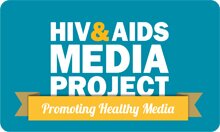HIV and the Power of Narrative Journalism
- "To me, narrative is a good feature held together with images and detail."— writer Rick Bragg
- "It's a complicated form of writing because you have to do so much reporting before sitting down to construct it. It's a complex equation, using scene setting, description, and dialogue."— writer Susan Reed
-
 "Narrative journalism is contactful— it contacts readers."— writer Mark Kramer, director of the Nieman Foundation Program on Narrative Journalism
"Narrative journalism is contactful— it contacts readers."— writer Mark Kramer, director of the Nieman Foundation Program on Narrative Journalism
Health indicators are a useful way of unpacking political rhetoric and showing how people in South Africa are living, in the second decade of their political liberation.
But some of our statistics and projections, particularly those relating to HIV and AIDS, are so overwhelming that they can cause instant denial. When I first read loveLife's projection that half the teenagers I knew in 2000 could become infected with HIV in the next decade, my immediate response was: "Rubbish". I could not digest the figure because it was too big and too alarming.
So statistics, aside from being hard to digest, are often too alarming or too abstract to sink in. How do we make these figures more palatable so that we can tell the stories that are happening in South Africa ? Is this where narrative journalism comes in?
There is little tradition of narrative journalism in South Africa. Most of us are schooled in news reporting. This means we are used to telling stories backwards. In very poor story-telling style, we take out any suspense by revealing the punchline first, followed immediately by the most important facts. In print, our stories usually trail off without any decent conclusion because we know that the sub-editors will hack off the bottom paragraphs.

We diligently rattle off the "who", "what", "where" and "when" parts, but often we neglect to delve properly into the "why" and "how". How many times have you covered something so compelling, yet by the time your story gets out there, it is as dry as a GCIS press release? Much of our news reporting is boring and formulaic because we don't pay enough attention to the actual crafting of the story, set only on cramming in as many "facts, facts, facts" as possible. This devotion to fact above feeling also means that essential detail is usually viewed as optional colour and is edited away.
But what is narrative journalism? I used to think a "human interest" story could pass as narrative journalism. But if this is the case, then the tabloids do human interest pretty well. But the tabloids focus either on celebrities or people caught in extreme situations. Either way, this simply makes our readers into voyeurs. I am not saying that we ignore the exceptional or the extraordinary, but I think that we also need to recognise the value of focusing on the lives of the ostensibly ordinary.
We no longer live in an age where we need to go out do battle with wild animals in order to bring home supper. Modern heroic tales are often those that involve ordinary individuals struggles with disease and disability or simply with the difficulties of keeping afloat when poverty threatens to drown them. During this struggle for a better life, they often discover an inner strength and heroic qualities that might not have come out otherwise. We need to write stories about these people that will strike a chord with the average reader, moving them from "ag shame" or "ag sies" to "yebo"!
Narrative Opportunities and Possibilities
Reporting Tip: Aim to Write "Intimate Journalism"
"The eternal verities of love, hate, fear, ambition, dedication, compassion are still our bread and butter. Always remember: Scene detail and narrative bring a story to life, while theme and meaning imbue it with a soul."— US journalist Walt Harrington
Journalist Ida Jooste, while on a fellowship with the Wits Journalism Programme in partnership with the Perinatal HIV/AIDS Research Unit, did some research on how receptive people in a poor community in Durban were to HIV/AIDS stories. Interestingly— and surprisingly for those of us used to being told by news editors that the public is "tired" of HIV and AIDS stories— Jooste found that the Cato Manor residents had "an overwhelming need for more HIV news, particularly news about ordinary people."5
So how do we make stories about everyday heroes and small-time villains compelling, given that these stories will be competing for very limited space with the big political and sensational stories of the moment?
US journalist-turned-academic Walt Harrington talks not about narrative but "intimate journalism". This he describes as "news you can feel" and aims to "describe and evoke how people live and what they value". According to Harrington, "The eternal verities of love, hate, fear, ambition, dedication, compassion are still our bread and butter. Always remember: Scene detail and narrative bring a story to life, while theme and meaning imbue it with a soul."6
Harrington offers a few basic techniques to achieve journalistic intimacy:
- Thinking, reporting and writing in scenes
- Capturing a narrator's voice and / or writing the story from the point of view of one or several subjects
- Gathering telling details from our subjects lives that evoke the "tone" of that life (engaging all five senses)
- Gathering real-life dialogue
- Gathering "interior" monologue (not just facts but the meaning these facts have for our subjects)
- Reporting to establish a timeline that allows us to write a narrative article that at its beginning posits a problem, dilemma or tension that will be resolved or relieved by the end the story, with a resultant change in our main subject or subjects
- Gathering physical details of places and people at specific points in conversations or scenes so they can be used at exactly those points in our story
- Always being aware that no matter how artful our stories may be, how specific they are to the lives of our subjects, they are primarily meant to enlighten, caution, criticise or inspire, always resonate, in the lives of readers
The pointers above are invaluable. When I hold up some of my own stories against these, I become unsure about whether I have ever succeeded in going beyond "human interest" to true intimate journalism. Before I produce a litany of excuses about how difficult it is to introduce intimate or narrative journalism into our fact-hungry, space-starved media environment, I thought I would look at a few of my efforts and offer some of my experiences and self-criticisms.






